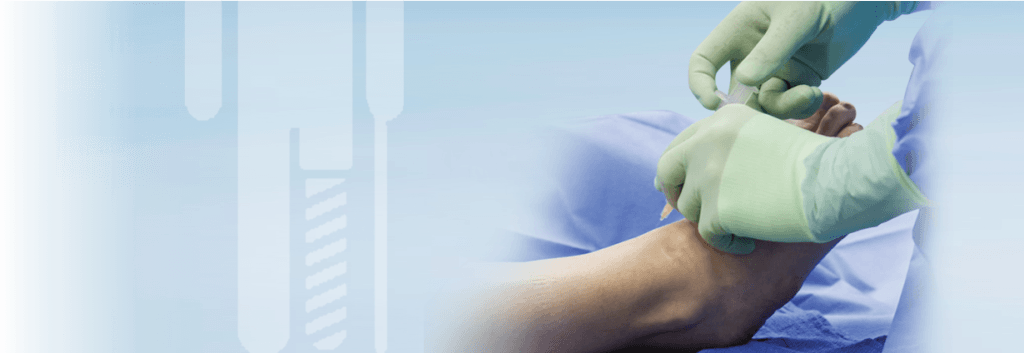Limb Salvage Surgery: Diabetes Affects, Care And Control

People with diabetes are more prone to foot problems, often due to two complications of this disease: nerve damage (neuropathy) and poor circulation. Peripheral neuropathy causes a loss of sensations in the feet, which decreases the ability to feel pain or injury. Poor blood flow decreases the body’s ability to heal, which makes it difficult to face an infection or heal injuries or wounds. For a person with Ingrown Toenail Diabetes, these complications can be a deadly combination calling up for a limb salvage surgery.
When a person with diabetes has neuropathy, they often do not realize if their shoes are pressing and producing calluses, cuts or blisters. These minor injuries to the feet can develop into ulcers, which are ruptures or holes in the skin. If, also, there is poor circulation, the sores may become infected and may not heal properly. This is a complication associated with diabetes and can lead to chronic limb salvage, which is one of the leading causes of amputation. It is considered when the healing potential is low or if a severe infection spreads, threatening the life of the patient.
Prevent complications
It is essential that people with diabetes take preventive measures to take care of their feet, including wearing proper shoes, doing daily foot inspections and having regular Ingrown Nail Treatment and examination with podiatrists. Because even the smallest foot problem can become a serious complication, it is important to seek new Ingrown Nail Solution for any issues, especially minor cuts, blisters and calluses around the toenails.
When complications arise
The loss of life or limbs is a real concern for people with diabetes who have a severe infection. Doctors and patients work together to decide the best options to treat the disease, prevent the loss of limbs and get the patient to improve as soon as possible.
When limb salvage is the best course of treatment
Limb salvage is a complication that, if possible, both patients and doctors strive to avoid. It is estimated that about 85 percent of amputations are preventable through education and early intervention. Amputation should not always be seen as a treatment failure, but rather as a faster and more reliable means of rehabilitation to return to activities of daily living. Limb surgery may be the best way to control a severe infection that might require a more traumatic amputation in the future or that otherwise could be fatal to the patient. It does not always involve the loss of the entire foot or leg as the whole. Surgical interventions are performed at different levels, including partial amputations of fingers, partial foot amputations or amputations below the knee. A foot and ankle surgeon will perform a complete evaluation and determine the best method for the patient to begin recovery.
What to expect at home after limb salvage surgery
You may feel sad, angry, frustrated and depressed. All these feelings are normal and can arise in the hospital or when you get home. It will take time for you to learn how to use a walker and a wheelchair. It will also take time to learn how to get on and off the wheelchair. You can receive a prosthesis, an artificial part to replace the limb that was removed. You may also have leg pain for several days after limb salvage surgery. You may also experience a feeling that the limb is still there. This is called phantom limb sensation.
Personal care
Family and friends can help. Talking with them about their feelings can make you feel better. If you feel sad or depressed, ask your health care provider about the possibility of consulting a mental health counselor for help with your feelings.
- If you have diabetes, keep your blood sugar well controlled.
- If you have poor circulation, follow your provider’s instructions regarding food and medications.
- You can eat healthy foods when you get home.
- If you smoked before your injury, stop doing it after your limb salvage surgery.
Activity
- Do activities that help you get stronger and perform your daily activities, such as bathing and cooking.
- When seated, keep the stump straight and level.
- Try not to turn the stump in or out when lying on the bed or sitting on a chair.
- Use towels or rolled blankets next to the legs to keep them in line with the body.
- DO NOT cross your legs when sitting.
- DO NOT put a pillow under the stump.
When to call the doctor:
- The stump looks redder, or there are red stripes on the skin.
- The skin feels warmer to the touch.
- There is swelling or bump around the wound.
- There is new bleeding or discharge from the wound.
- There are new openings in the injury or the skin around the wound is coming off.
- Your skin around the stump or wound is dark or getting black.
- The pain is worse, and analgesics are not controlling it.
- The wound has gotten bigger.
- A foul odor comes out of the wound.
